More valuable than silver or gold in a real crisis...
Enter your text here...
Today's PPX Special Bonus
20 Heirloom "Seed Packs" Worth $100.00

2025 Heirloom Garden "Jump-Start" Bonus Seeds Below:
Tomatoes
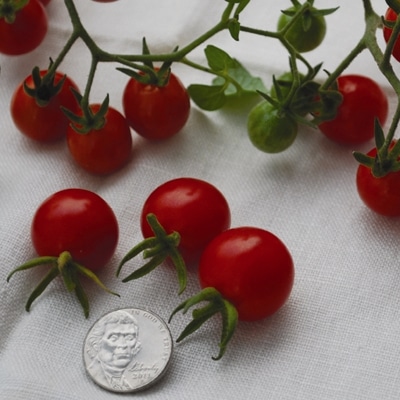
Mexico Midget Tomato
No hybrid comes close to this variety for huge tomato flavor in a small package. Plants are absolutely loaded with hundreds of ½” dark red fruits. An incredible flash of tomato flavor. The Mexico Midget surely has wild genes in its heritage. The Spanish brought the small yellow tomato to Europe and the Philippines. The climate in Italy allowed for many new varieties of tomato to develop with intense flavor.
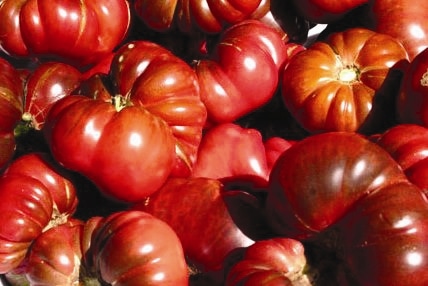
Purple Calabash Tomato
Purple Calabash tomato is a flattened ribbed, dark purple fruit, that grows on prolific vines. fruits are milder and juicy. Especially demanded by gourmet chefs for their beautiful ribbed look and intense color, this variety is very useful in many culinary applications.
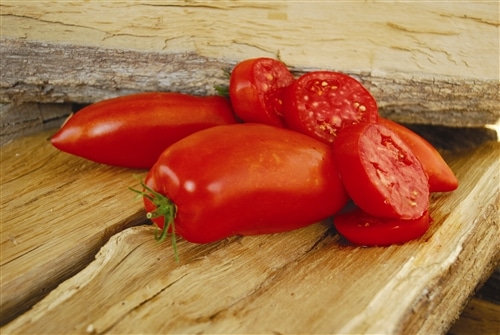
Jersey Devil Paste Tomato
The Jersey Devil Tomato is an extremely prolific old heirloom paste-type variety that is shaped like a little banana pepper. These juicy tomatoes have a very meaty texture that is great for making into sauces and salsas.This variety was another pillar of the New Jersey tomato industry, and is an ancestor to “Jersey Giant..
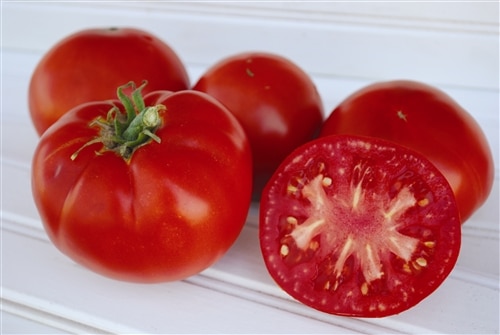
Super Sioux Tomato
The heirloom tomato Sioux was released in 1944 by the University of Nebraska. The Super Sioux is a later selection with a larger size, improved taste, and more disease resistance. The flavor is an exquisite blend of sweet, acidic and earthy flavors. A perfect variety for hot and dry climates. A great tomato for slicing, sauce and canning.
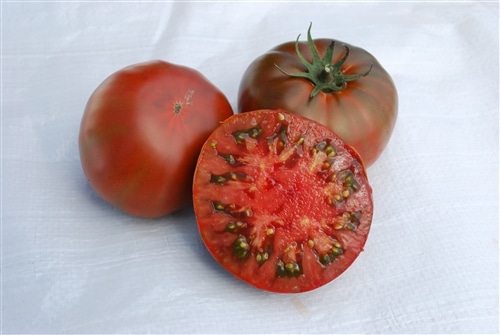
Paul Robeson Tomato
This famous tomato has almost a cult following among seed collectors and tomato connoisseurs, who simply cannot get enough of this variety’s amazing flavor that is so distinctive, sweet, and smoky. Named in honor of the famous black opera singer, star of King Solomon’s Mines. This Russian variety was lovingly named in his honor.
Peppers
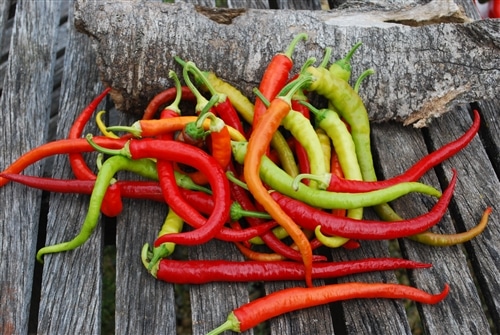
Corbaci Sweet Pepper
A unique and wonderful sweet pepper that turns from light green, to yellow, to orange and finally to bright red. It can be harvested and used at any stage. This rare heirloom is from Turkey and has a very rich, sweet flavor. A perfect choice for fresh eating, pickling or frying. Very productive plants need staking or a small cage to keep them from falling over due to the weight of the fruits.
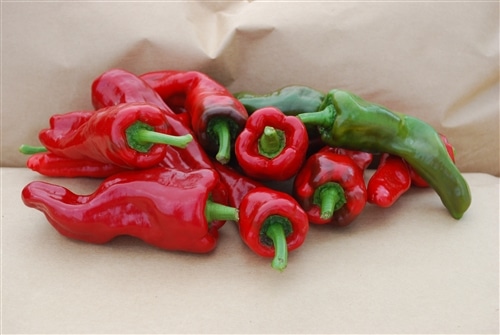
Melrose Sweet Pepper
This is a superb heirloom frying pepper brought to the US from Italy years ago. Wonderful rich flavor and very sweet. Great fried or fresh, a true Italian heirloom with a loyal following in the Chicago area. The flavor is good when green, but sweeter and more intense when they turn red.
Squash
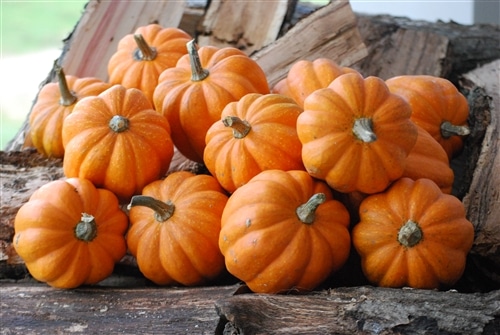
Gill's Golden Pippen Squash
This flavorful acorn squash may be among the first to show up on your table each fall. The fruits of this historic variety produce flesh that is pale orange, moderately sweet in flavor, and a bit variable in shape. Its vining plants are quite productive and yield relatively early-maturing fruits that measure 4-5" long and 3½ -4" wide, and weigh 1-1 ½ pounds.
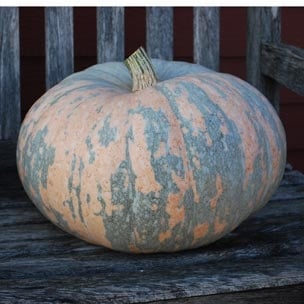
Iran Winter Squash
One of the most unusual and beautiful squashes you will ever see. Collected in 1940 in the northeastern Iranian city of Torbat-e-Heydarieh and preserved at the USDA seed bank ever since. Not known to the public until a few years ago. This squash is super ornamental, with its unique, foam-green rind that’s mottled in soft peachy orange. It keeps for a year or more, and is perfect for fall decorating.
Herbs
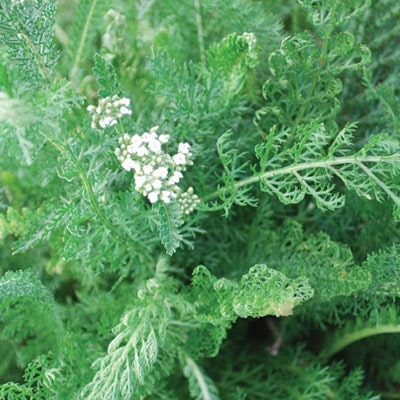
Yarrow
Yarrow has been used as a primary medicinal herb for thousands of years, and was known as Herba militaris in classical times because of its ability to stop bleeding on the battlefield. it has a long history of use in many cultures around the world including those of Scandinavia, Asia and Europe. The mythological history of Yarrow is fascinating; its Latin name comes from Achilles, the legendary Greek warrior, who used Yarrow to heal his soldiers who were wounded in battle.
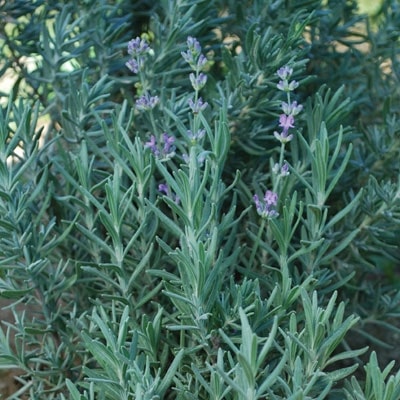
Lavender
The origin of Lavender is believed to be from the Mediterranean. Its history goes back some 2500 years. Lavender is a flowering plant of the mint family known for its beauty. Its sweet floral fragrance and its multiple uses. Lavender derives its name from the Latin ‘lavare’ meaning ‘to wash”. The Romans used Lavender to scent their baths, beds, clothes and even hair. They also discovered its medicinal properties.
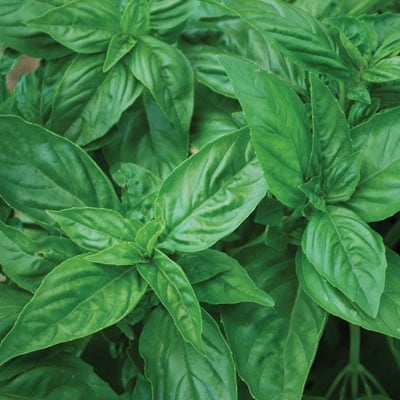
Sweet Genovese Basil
This is the classic Italian sweet basil, prized for its large leaves, wonderful aroma and spicy flavor. Sweet genovese basil is the best choice for making pesto. The best genoese basil is said to be grown in Prà, a western delegation of the city of Genoa. The nearby presence of a large steel mill from the 1950s to the 1980s threatened the cultivar, said to be necessary to produce the “real” genoese pesto.
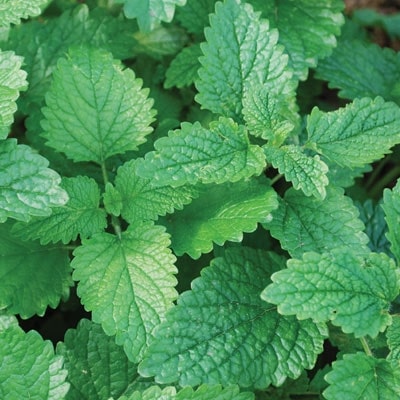
Lemon Balm
Lemon Balm Herb is member of the mint family which is used to help treat sleep disorders when brewed as a tea. In antiquity, Lemon Balm was cultivated as a food for bees. Virgil and Pliny reported that, due to its strong aroma, leaves of Lemon Balm were rubbed on new beehives to entice the bees. The medical use of Lemon Balm has a 2000-year-old tradition. Arab physicians used the plant to fortify the heart and to treat melancholy.
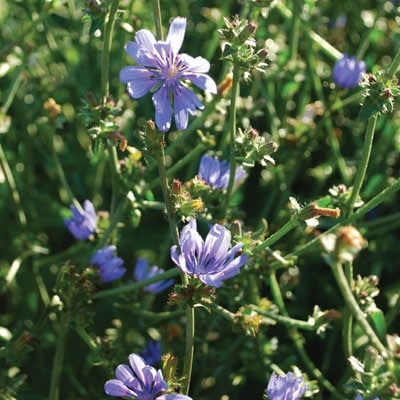
Chicory
Blue-flowered perennial plant of the family Asteraceae. The plant is grown as a fodder or herbage crop for cattle. Chicory root can be roasted and ground to impart additional colour, body, and bitterness to coffee. in the United States this practice is especially popular in the city of New Orleans. When flowering, chicory has a tough, grooved, and more or less hairy stem, from 30 to 100 cm (10 to 40 in) tall. Of the two rows of involucral bracts, the inner is longer and erect, the outer is shorter and spreading.
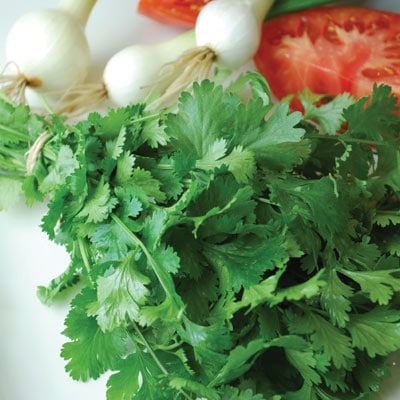
Cilantro
Cilantro is one of the most widely used culinary herbs in the whole world. The herb was one of the first (along with dandelions) that early pioneers brought to the Americas from Europe. Farmers have grown it in many places, including the Massachusetts Bay Colony by the mid-1600s. The conquistadors brought it into Mexico in the 1500s. In the mid-1700s, people made liquor from the coriander seeds, but this experiment proved unsuccessful. Today, common folk and culinary experts alike use cilantro and coriander.
Flowers

Snap Dragon Flower Mix
Long, strong stems are covered with large, closely placed flowers in a full color range to form gracefully tapered, towering spikes. Splendid for the tall border and cutting. Native of Europe, this stunning mix consists of reds, yellows, and pinks. Can grow to over 3' tall, perennial. While their actual origin is unknown, it's believed that snapdragons were originally wildflowers in Spain and Italy. This flower originated in the Mediterranean area but now thrives in the UK when planted in well-fertilized soil in full sun. Snapdragon, originates from the flowers' reaction to having their throats squeezed, which causes the "mouth" of the flower to snap open like a dragon's mouth.
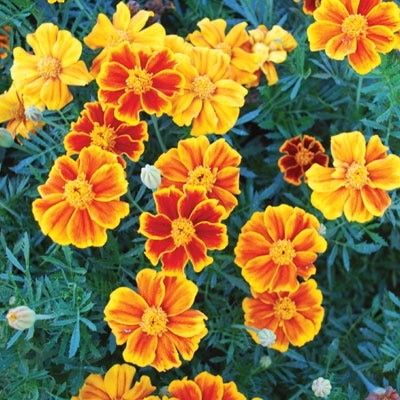
Red Marietta Marigold
The classic garden marigold. Perfect accent or border plant, great for containers. Red Marietta still has the old-time marigold scent that has been bred out of the modern hybrids. Annual, 12″ tall. Plant seeds after the danger of spring frost has passed and the soil temperature is at least 60 degrees. This will be between March and May, depending on where you live.
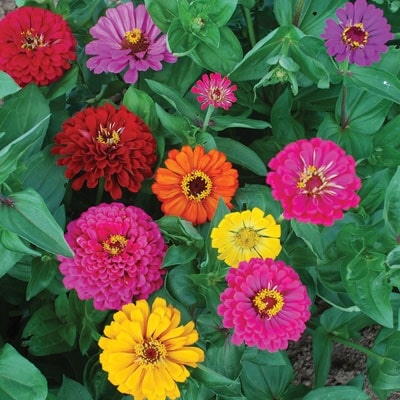
California Giant Zinnia
Developed in 1926, Heirloom California Giant Zinnias produce stems as tall as 4 feet with huge 5″ blooms, making this variety ideal for cut flowers! The shape of the flower is a bit more open than the Dahlia Flowered variety, with petals rounded on the end. Easy to grow, Zinnias look wonderful when planted. Plant seeds after the danger of spring frost has passed and the soil temperature is at least 60 degrees.
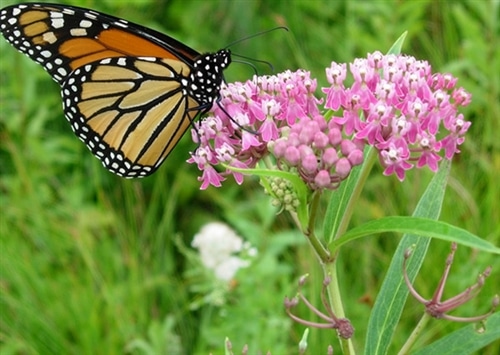
Rose Milkweed AKA “Swamp Milkweed”
A native to North America, it is a favored food source for Monarch larva. Rose Milkweed has small clusters of vibrant pink to purple flowers. Prefers damp soils and is very deer-resistant. Can reach heights of 3-6′ tall. Did you know that late in World War II, the common milkweed was often the only thing that kept a downed aviator or soaking-wet sailor from slipping beneath the waves.
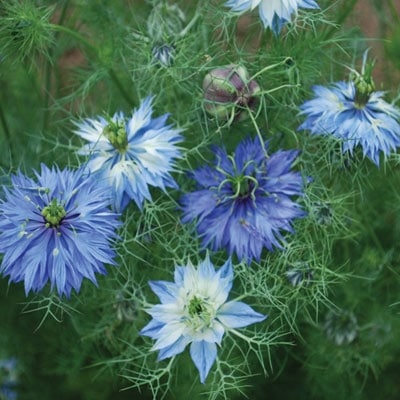
Love In A Mist
Love-in-a-mist is a charming, old-fashioned annual flower. Love-in-a-mist, Nigella damascena, is a charming old-fashioned flower that blooms in spring and early summer. The genus name Nigella comes from the Latin niger (black), referring to the intense black seeds. Grown for nearly 500 years in England. Simple blue flowers followed by captivating little seed pods, great for drying.
*Important: We are in a very real "non-hybrid" seed shortage. This means we may have to substitute varieties if supplies become exhausted. All Garden "Jump-Start" Packages will contain the same amount of ONLY Heirloom seeds!*
$100.00 Total Value!
2025 - Powerful Living LLC. All Rights Reserved.